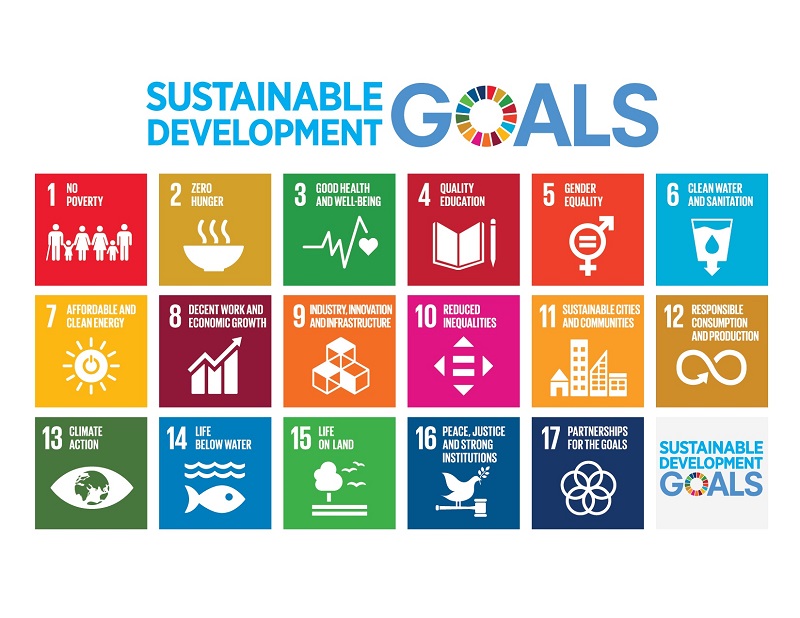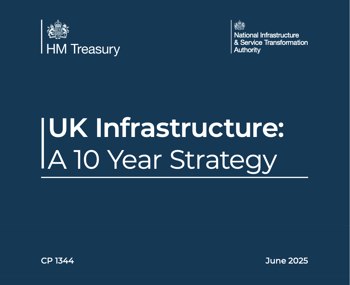UN Sustainable Development Goals

|
Contents |
[edit] Introduction
In 2015, all member states of the United Nations (UN) adopted the 2030 Agenda for Sustainable Development. This was a shared blueprint aiming to achieve peace and prosperity for the entire planet by 2030.
At the heart of the Agenda lie 17 Sustainable Development Goals (SDGs) designed to unite all countries as part of an urgent call for action. The initiative is formulated to be an all-encompassing drive to end global poverty and other deprivations as part of a strategy that also encompasses improvements in health and education, reductions in inequality, economic growth, strategies to tackle climate change and preservation of the world’s oceans and forests.
[edit] The 17 Sustainable Development Goals
- End poverty in all its forms everywhere.
- End hunger, achieve food security and improved nutrition and promote sustainable agriculture.
- Ensure healthy lives and promote well-being for all at all ages.
- Ensure inclusive and equitable quality education and promote lifelong learning opportunities for all.
- Achieve gender equality and empower all women and girls.
- Ensure availability and sustainable management of water and sanitation for all.
- Ensure access to affordable, reliable, sustainable and modern energy for all.
- Promote sustained, inclusive and sustainable economic growth, full and productive employment and decent work for all.
- Build resilient infrastructure, promote inclusive and sustainable industrialisation and foster innovation.
- Reduce inequality within and among countries.
- Make cities and human settlements inclusive, safe, resilient and sustainable.
- Ensure sustainable consumption and production patterns.
- Take urgent action to combat climate change and its impacts.
- Conserve and sustainably use the oceans, seas and marine resources for sustainable development.
- Protect, restore and promote sustainable use of terrestrial ecosystems, sustainably manage forests, combat desertification, and halt and reverse land degradation and halt biodiversity loss.
- Promote peaceful and inclusive societies for sustainable development, provide access to justice for all and build effective, accountable and inclusive institutions at all levels.
- Strengthen the means of implementation and revitalize the global partnership for sustainable development.
Each SDG has one or more targets (total 169) and each target has between one and three indicators. Compliance will be measured according to 232 approved indicators.
[edit] Foundations for the UN Sustainable Development Goals
The SDGs are founded on previous work carried out by various countries and the UN:
- The 1992 Earth Summit in Rio de Janeiro and its adoption of Agenda 21.
- Adoption of the Millennium Declaration at the Millennium Summit in September 2000.
- The Johannesburg Declaration in 2002.
- The Future We Want, UN Conference on Sustainable Development (Rio+20) June 2012.
- UN General Assembly Open Working Group, 2013.
- UN adoption of 2030 Agenda for Sustainable Development including 17 SDGs, 2015.
[edit] Achieving the goals
Implementation of the SDG’s has been on-going since 2016 with governments, institutions, universities and individuals working on at least one, sometimes several SDGs simultaneously.
Further information and updates on the progress of each of these goals can be seen on the UN’s sustainable development website at https://sustainabledevelopment.un.org/.
[edit] Related articles on Designing Buildings
- An interpretation of the SDG's for use at an infrastructure project level.
- Circular economy.
- Clean development mechanism.
- Climate change science.
- Earth overshoot day.
- Energy Related Products Regulations.
- Energy targets.
- Global compact.
- Helping achieve the UN's Sustainable Development Goals.
- Interactive CEEQUAL and Sustainable Development Goals mapping.
- Intergovernmental Panel on Climate Change.
- Millennium Development Goals.
- QSAND and the Sustainable Development Goals.
- Sustainable Development Goals and civil engineering.
- Sustainable Development Goals and the triple bottom line.
.
Featured articles and news
RTPI leader to become new CIOB Chief Executive Officer
Dr Victoria Hills MRTPI, FICE to take over after Caroline Gumble’s departure.
Social and affordable housing, a long term plan for delivery
The “Delivering a Decade of Renewal for Social and Affordable Housing” strategy sets out future path.
A change to adoptive architecture
Effects of global weather warming on architectural detailing, material choice and human interaction.
The proposed publicly owned and backed subsidiary of Homes England, to facilitate new homes.
How big is the problem and what can we do to mitigate the effects?
Overheating guidance and tools for building designers
A number of cool guides to help with the heat.
The UK's Modern Industrial Strategy: A 10 year plan
Previous consultation criticism, current key elements and general support with some persisting reservations.
Building Safety Regulator reforms
New roles, new staff and a new fast track service pave the way for a single construction regulator.
Architectural Technologist CPDs and Communications
CIAT CPD… and how you can do it!
Cooling centres and cool spaces
Managing extreme heat in cities by directing the public to places for heat stress relief and water sources.
Winter gardens: A brief history and warm variations
Extending the season with glass in different forms and terms.
Restoring Great Yarmouth's Winter Gardens
Transforming one of the least sustainable constructions imaginable.
Construction Skills Mission Board launch sector drive
Newly formed government and industry collaboration set strategy for recruiting an additional 100,000 construction workers a year.
New Architects Code comes into effect in September 2025
ARB Architects Code of Conduct and Practice available with ongoing consultation regarding guidance.
Welsh Skills Body (Medr) launches ambitious plan
The new skills body brings together funding and regulation of tertiary education and research for the devolved nation.
Paul Gandy FCIOB announced as next CIOB President
Former Tilbury Douglas CEO takes helm.
UK Infrastructure: A 10 Year Strategy. In brief with reactions
With the National Infrastructure and Service Transformation Authority (NISTA).






















